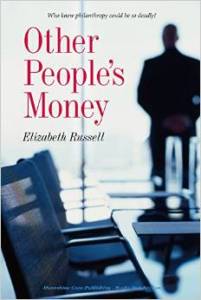by Mark Bloom | Jun 28, 2015 | Blog Writing
Everything You Should Know About Keywords

Writing business blogs, one of the core services Ray Access provides, is not like writing for a newspaper. It’s not writing a scholarly essay. And it’s certainly not like writing a short story. There’s an art and a science to it that few have mastered.
When done correctly, blog content attracts people looking for similar topics. It draws traffic to your website. A business blog can be a marketing tool, promoting your business and extending your reach, but only if your business blog posts are written properly. You don’t necessarily need Ray Access for this process, but we can do it quickly and inexpensively, freeing you up to run your business.
What Are Keywords?
A keyword is actually a string of words that together compose a phrase that someone may type into a search engine entry field. In other words, it’s a phrase that people are searching for. The more people that are searching for that phrase, the more valuable that keyword phrase becomes. Broad keywords (such as “writing”) have lots of competition, while more refined keyword phrases (such as “business blog writing”) may be easier to rank for.
Choosing the right keywords is an important part of gaining online visibility for your website. For example, if you own a massage business, your location should be in the keyword, as well as a descriptive word. So “Asheville therapeutic massage” is a better keyword phrase than “table massage.”
The Science of Business Blog Writing
Using keywords appropriately is the science of blog writing for your business. Keywords make it easier for people looking for your business to find you. Keywords tie your business blogs into the way search engines work.
But that’s not the only thing you need to know about the science of business blogging. You also need to post blogs regularly and consistently. You do not need to post a new blog every day, although that wouldn’t hurt. Once a week is sufficient. Your business still gets benefits from a bi-weekly or even monthly blog post; it just takes a little longer to work.
The Art of Blogging for Business
When you write a business blog post, write for your human visitors, not for the search engines. Only by providing useful content will you gain online traction. While the goal of maintaining a blog is to market your business, the way to do it is to appeal to actual people.
Answer common (and uncommon) questions about your business, industry or location. Share tips about your product or service. Provide content that is “share-worthy.” Going viral is hitting a home run in the blogging community, but don’t expect it to happen often. Target your customers and write to help them in some way. That’s the way to build your business.
Writing Tips
Develop a title that will grab attention. “Tips” is a good word to use in the title. So is “How to.” Include subheadings within the content. That helps visitors scan the article to find information. Subheads also break up the text so you don’t have imposing paragraphs that chase visitors away.
Use language that your customers can understand. When you write, speak to your audience, not at them. Write in approachable terms. You are building a relationship with your customers, so just as you might in real life, face-to-face situations, be polite, clear and friendly. Remember, that people do business with people and companies they like. Be likeable, even in print. It’s a science and an art that the experts at Ray Access can help you master.
Ray Access is a content marketing firm that delivers targeted words to empower your business. Contact us about your specific project to receive a quote or discuss your needs. We write website copy, blog posts, e-newsletters and more. Everything we do is thoroughly researched, professionally edited and guaranteed original.
by Mark Bloom | Jun 2, 2015 | Website Content
Why Ray Access Provides Website Assessments
Our website assessment gives your site a human evaluation.

Website analytics (like Google Analytics) can show you all kinds of data:
- How many unique visits your website attracts.
- How long they stay on your site.
- What pages they visit.
- Where they came from or how they got there.
All this is really useful information, if you know how to decipher it and act upon it. To the content experts at Ray Access, however, there are two very simple computations that are meaningful:
- Are you attracting enough visitors to your website, and
- Are you converting those visitors into customers?
In plain language, is your website successful at bringing in new and repeat business? Is it working for you? If it is, you don’t need analytics to tell you; you can see it in your bottom line. If your website isn’t working, analytics may not tell you what’s wrong.
What’s Wrong with Your Website
No disrespect to analytics and those professionals who rely on the data they generate. Those numbers are real, they’re valid and they do reflect success or failure. But customer conversion is a subtle art. If it were simply a matter of numbers, every online venture would eventually succeed, given the plethora of search engine optimization (SEO) specialists out there.
Unfortunately, conversion relies on multiple factors, including the mood of the visitor when he reaches your website. Little things can erode his curiosity, his confidence and his desire to buy. For example:
- Readers who see spelling or grammatical errors on your website lose faith in your credibility.
- Visitors often give up after a few seconds if they don’t see what they need right away.
- Your website content may actually say one thing when you meant another, causing visitor confusion and lost sales.
- Poorly designed sites are notorious for pushing away visitors. If your website content is not easy to scan, your website’s not easy to use.
- Website designs that look antiquated do not elicit feelings of confidence in visitors.
- Big blocks of text turn readers off.
- A bad experience, like a bad review, is impossible to delete. Once your reputation is tarnished, you can’t easily win back your audience.
Pet Peeves of Real People
 While responding to analytics can show you where your website issues lie, you can master the SEO requirements for the pages of your website and still not be able to convert the visitors you’re drawing. The problem could be that you’re so immersed in keyword research that you’ve forgotten that it’s real people who actually visit your site. Real consumers rely on those search engines to bring them the goods, services and information they seek. So you must direct your website content to answer real questions from those real human visitors.
While responding to analytics can show you where your website issues lie, you can master the SEO requirements for the pages of your website and still not be able to convert the visitors you’re drawing. The problem could be that you’re so immersed in keyword research that you’ve forgotten that it’s real people who actually visit your site. Real consumers rely on those search engines to bring them the goods, services and information they seek. So you must direct your website content to answer real questions from those real human visitors.
One of the worst mistakes web developers make is to rely on cool graphics, hyped up verbiage and trendy videos. As a result, a first-time visitor to your site sees so much flash that by the time he finishes viewing all these distractions on your home page, he still doesn’t even know what your company does, what it sells or why it even has a website (other than to show off its trendiness).
Business owners often rely too heavily on website designers to create a site, and then don’t take the time to go over that site to ensure that it works for their target market. What ends up happening is you get a great-looking site that doesn’t actually work to convert visitors. And if you don’t know what’s wrong, you can’t fix it.
Another common flaw in website design is that the contact information is difficult to find. Putting it in small fonts at the bottom of your page is insulting to a visitor who may just need a phone number or email address to ask a question or make a purchase. Your contact information — an email address, phone number, physical address, hours of operation… whatever it is — may be the most important thing on your website.
Website Assessments to the Rescue
We started Ray Access because of our own experiences and frustrations with website design and poor content quality. Here was a niche we knew we could fill. But at the beginning, we just offered to write website content and blog posts. Soon after, we launched a service we hadn’t even considered at the beginning: website assessments. For every new client, we offered to review the existing website and point out problems, errors and opportunities. Then we provided ideas, options and solutions.
It turns out that website assessments held enormous value in and of themselves. So it became a standalone service. An affordable, no-obligation website assessment provides a snapshot of how effective your current website is from a content perspective. In other words, we examine your website as a first-time visitor might see it. We generate a page-by-page report that tells you what works, what doesn’t work, and even what’s missing.
Why Content Providers?
 Whether you are creating a new website or updating a current site, bring in an experienced team of website professionals to provide an outsider’s view of your content and design. While we’re not website designers or SEO pros here at Ray Access, we have visited thousands of websites and we are experts in content. We know what works.
Whether you are creating a new website or updating a current site, bring in an experienced team of website professionals to provide an outsider’s view of your content and design. While we’re not website designers or SEO pros here at Ray Access, we have visited thousands of websites and we are experts in content. We know what works.
We review your content to determine if it builds trust and answers questions. We check your design to see if it’s clear and east to navigate. We look at your graphical elements to find out if they add value or just get in the way. And since our website assessments come with no obligation, you can turn around and hire someone else to fix your problems. Adding value is our goal. Getting more business from you does not motivate us; earning your trust does.
It’s the Details that Count
A professional website assessment from Ray Access gives you:
- An overall critique of your site, including how it looks and how it reads
- In-depth line reading for grammar, spelling and context appropriateness
- Review for clarity
- Advice for where to place call-to-action elements
- A check of all active links (you’d be surprised how many web pages are filled with broken links)
- Questions that your customers may have that can’t be found easily on your site, if at all
- Suggestions for additional pages
- How well and how easy your website is to navigate (or not)
- Critique of the photos and taglines
- SEO options, such as keyword optimization
- An honest appraisal of how a new visitor sees your site
With each new website assessment we do, we find areas that are confusing or conflicting that we never encountered before. Because your business is unique, your website should reflect it. You can find hundreds of really cool design templates out there. Many businesses try to stand out by relying on slang and non-business verbiage. That’s great. Have fun building your site.
But don’t trade trendiness for clarity. And don’t trade flash for conversions. The bottom line is that your website should be adding to your bottom line. If it’s not, contact Ray Access for a website assessment. We’ll find the real world answers for you.
Ray Access is a content marketing firm that delivers targeted words to empower your business. Contact us about your specific project to receive a quote or discuss your needs. We write website copy, blog posts, e-newsletters and more. Everything we do is thoroughly researched, professionally edited and guaranteed original.
by Mark Bloom | Mar 31, 2015 | Content Provider
Most People Want to Know: What Is a Keyword?
To start at the very beginning, a keyword (or keyword phrase, since a keyword can consist of one to five words) reflects the subject of a website page or blog post. The keyword sums up the content so that search engines can identify what’s on that page. It’s a shortcut, but it helps people find your page and visit it, already knowing that you are have what they expect to find.
Keywords are an important part of SEO or search engine optimization. SEO is the art and science of making a website or blog more visible to potential visitors. Using keywords correctly, therefore, helps bring traffic — and the right traffic — to your website or blog. Let us explain, since the writers and editors at Ray Access deal with keywords every day.

1. Finding the Right Word
For any bloggers, but especially for business bloggers, finding the right keyword is the difference, as Mark Twain famously wrote, “between lightning and a lightning bug.” In other words, are you trying to attract meteorologists or entomologists? The keywords you use in your blog can attract the right audience or simply increase your bounce rate.
The bounce rate from your website or blog is the percentage of your visitors who leave quickly after landing on your site. Search engines interpret your bounce rate as people who went to your site expecting one thing and found another. In other words, they didn’t find what they were looking for and quickly left. Minimizing your bounce rate means you’re attracting your intended audience.
2. Choosing the Right Keyword Density
The playing field has shifted as search engines refine what they try to deliver to their customers. In days gone by, it was acceptable (and advantageous) to cram a keyword phrase as many times as possible into a website or blog. Those days are over. If you attempt to keyword-stuff an article with a particular phrase, the search engines will reject it and penalize your website or blog.
The optimum keyword density — that is, the percentage of the keyword to the rest of the words on the website or in the blog — is now a more comfortable one percent. That means for a 1,000-word blog post, the chosen keyword or keyword phrase should appear about 10 times.
3. Placing the Keyword Correctly

Putting the keywords you’ve selected in the right places on (and behind) your page or post maximizes the effect they have on a search engine. Keywords used correctly help your page rank high for the chosen keyword or keyword phrase. Ideally, insert your chosen keywords:
- In the title of the web page or blog post
- In the first sentence or paragraph
- In a subheading
- In several other places in the text (depending on the length of the page or post)
- In the last sentence or paragraph
The keyword should also be part of the meta-title and meta-description. These do not appear on the website page or in the blog post, but they do show up when a search engine shows your website page or blog post in its search results. It’s the title and short description that appears when your site or blog shows up on a search engine results page. You can use the meta-title and meta-description to further entice people to click on and visit your page, as long as you’re honest and ethical about what’s really on the page.
Using keywords on website pages and on blog posts is a subject that runs deep and wide. The introductory tips listed here will immediately help your website or blog rank higher. Just keep in mind that choosing the right keywords is a difficult task to master. Seek help if you need it. It can make all the difference to your website or blog ranking.
Ray Access is a content marketing firm that delivers targeted words to empower your business. Contact us about your specific project to receive a quote or discuss your needs. We write website copy, blog posts, e-newsletters and more. Everything we do is thoroughly researched, professionally edited and guaranteed original.
by Mark Bloom | Feb 18, 2015 | Small Business Advice
10 New Ways to Improve Your Networking Skills
If you network in your town, you likely go to Chamber of Commerce events. You attend weekly after-hours, before-hours and during-hours networking meet-ups. You drink cups of coffee. You drink mugs of beer. You smile and nod. All in the hopes of making more sales.
You’ve got it all wrong, baby.
Instead, here’s a networking tip: try a different approach. Attend only those networking events that give you the best opportunities to meet new people. Make small talk with more people and introduce yourself to as many people as possible. In the end, this approach will pay off in more sales.

Leave the Pitch at Home
Networking is not the place to pitch prospects. If that’s what you’re doing, you’re going to be sorely disappointed. Eventually, you’ll join the ranks of naysayers who eschew shoulder-rubbing events for a cold beer and a ham sandwich at home — alone — where no one can get under your skin.
Networking is the place to meet interesting business people, learn what they do and who they do it with. It’s the place to see your peers and be seen as a helpful presence. With this approach, eventually you’ll start getting the calls asking for your professional help. People do business with those they like.
10 Tips to Take to the Bank
Get the most out of your networking by following this advice:
- Arrive early
- Make friends
- Keep your cards handy
- Leave a positive impression
- Learn something new
- Remember names
- Tell a good joke
- Laugh at a bad joke
- Make introductions
- Leave late
Intrigued? Remember networking tip #5 above and keep reading.
- Arrive early
Sponsors, event coordinators and energetic networking nuts get to networking events early. As part of the “inner circle,” they often volunteer to do some task during the event. They know the benefits, and now you can too. Imagine how many more people you’d meet in an evening if you were the one pouring the beer. Think how popular you’d be if you got to hand out the door prizes. Networking is a participatory activity. Get involved. Get there early, and offer your assistance. You’ll come to be known for your generosity and willingness to help.
- Make friends
People like to do business with people they trust — like their friends. Once you’ve seen someone around the local business circuit long enough, you realize they aren’t going anywhere. Introduce yourself. When you take time to get to know people — how many kids they have, for example, or what they do in their free time — you naturally feel a little closer to them. You develop a rapport. When they need something you offer, they’ll call a friend quicker than they would call a networking associate.
- Keep your cards handy
While all the feel-good schmoozing is great for your reputation and friend status, your ultimate networking goal is to grow your business. We get that. So bring plenty of business cards to pass around. As a matter of fact, don’t leave home without them. Keep cards in easy-to-reach pockets or in the side pocket of your handbag where you can reach for them with ease and grace. Nothing blows an exit like making someone wait while you try to fish out a card from a messy handbag or a pocket stuffed with swag. For the best impression, always present your card so that it’s facing the person you’re handing it to.
- Leave a positive impression
 One of the best ways to impress people is to listen. When you meet someone new, apply a firm handshake and look the person in the eyes. Make a connection. Pretend the two of you are the only ones in the room. No one feels good talking to someone who constantly looks around the room. That merely says, “I’ll ditch you if someone more important comes along.” Hold eye contact and respond appropriately to the speaker. When in the middle of a group, nod and laugh when everyone else does, they’ll think you’re one of them — and like you for it.
One of the best ways to impress people is to listen. When you meet someone new, apply a firm handshake and look the person in the eyes. Make a connection. Pretend the two of you are the only ones in the room. No one feels good talking to someone who constantly looks around the room. That merely says, “I’ll ditch you if someone more important comes along.” Hold eye contact and respond appropriately to the speaker. When in the middle of a group, nod and laugh when everyone else does, they’ll think you’re one of them — and like you for it.
- Learn something new
Time is precious for everyone. Salespeople, small business owners and CEOs all have a million things they need to do. You’re not the only one using up your valuable hours in the local beer hall or event facility trying to network. Use your time wisely and make it a priority to learn about a new product, discover a new way to use your smartphone, find out who just moved into town or how many seeds it takes to grow a watermelon. Leaving networking events with newfound knowledge makes you smarter and makes the best use of your time. (Little secret: people like people who ask questions.)
- Remember names
Remembering names can be tough, especially when you meet a dozen or more new people at a single event. But don’t give up. Instead, consider it a challenge. A good exercise for your brain health is to try to remember at least 10 names during each networking event. The impression you’ll make the next time you see one of them and remember the name is priceless. You can’t buy that kind of marketing for any amount of money. This is one of the little secrets of networking that can build your business tremendously. And while you’re at it, you’re giving your brain a little workout.
- Tell a good joke
 Laughter is like glue; it bonds people together. Laughter tells others in the room that you have a sense of humor and don’t take yourself too seriously — major personality pluses. If you feel uncomfortable telling a joke, practice. Keep your joke clean and free of cultural references. And find something relevant like: “Last week at this after-hours, I asked a guy why he left his last job. He told me it was illness-related. His old boss got sick of him.”
Laughter is like glue; it bonds people together. Laughter tells others in the room that you have a sense of humor and don’t take yourself too seriously — major personality pluses. If you feel uncomfortable telling a joke, practice. Keep your joke clean and free of cultural references. And find something relevant like: “Last week at this after-hours, I asked a guy why he left his last job. He told me it was illness-related. His old boss got sick of him.”
- Laugh at a bad joke
Almost all people think they’re funny. Some are not. But a networking event is not the time embarrass anyone. Show good manners and laugh if someone tells a joke you’ve heard 17 times that week. Never make people feel uncomfortable. It will reflect poorly on you. If you’re kind and gracious, they’ll remember your kindness. They’ll know they can trust you. And you can be sure that they’ll call you when they need your product or service.
- Make introductions
Of all the networking tips, this one is our favorite. It feels powerful when you’re the one in the know. Be the good guy or gal and introduce people you meet to people you know, especially when it may help either or both of them. Give a positive testimonial of their business or talk up their favorite hobbies or the big promotion they recently got. You’ll be remembered as the one who made the connection. You’ll be known as the one who has a finger in all the pies. You’ll gain a reputation as the one to get to know in business networking circles.
- Leave late
On days when you don’t have to rush off to another meeting or return to the pile of work waiting for you, stick around to the very end of the networking event. There are always a few stragglers who still want to talk — or boast or rant. You never know whom you’ll run into when the room starts to clear. It’s very often after the last shrimp has been gobbled up and the tables are coming down that the really big, meaningful (and profitable) relationships are forged. Don’t miss it.
Ray Access is a content marketing firm that delivers targeted words to empower your business. Contact us about your specific project to receive a quote or discuss your needs. We write website copy, blog posts, e-newsletters and more. Everything we do is thoroughly researched, professionally edited and guaranteed original.
by Mark Bloom | Feb 7, 2015 | Website Content
How Can Anyone Tell If Your Copy’s Any Good?

Everyone with a keyboard thinks she’s a writer.
The problem with being a writer or a painter is that anyone can do it. All it takes is a few strokes of the pen or brush (manually or digitally), and you’ve got something. So how can you tell if it’s any good? Given the state of art and literature today, you could realistically assume that “quality” is a totally subjective assessment.
Maybe that’s even true, but when it comes to writing online, for businesses, there are ways to determine whether the content on your website or in your blog reaches the heights reserved for the label “quality content.” Ultimately, it comes down to the objective question: Does it work?
Does It Work?
A website for a business is supposed to generate leads and convert visitors into customers. A business blog is supposed to attract people to your website, share insights into your industry, and tout you as a trusted professional. The goal of online content is to get your company noticed.
If it’s not working, you can tell. Traffic to your website is down. The people who do visit aren’t buying. If you have these problems, it could be that you don’t have the right content on your website. It’s possible that good content — content that’s useful to people doing searches, content that’s directed at your target market — can solve these problems.
How Does It Work?
Quality content attracts two distinct audiences: people and search engines. This order is important. Good content is written for people first (not for search engines). If people can’t read it and understand it, then search engines won’t like it either.

Web searches have to provide answers.
People are searching online for answers to questions (e.g., “How do I fix a leaking faucet?”), for specific information (e.g.,”Where can I buy a new faucet?”) and to find businesses (e.g., “Who’s the best plumber in town?”). If you’re a plumbing service, your website should answer all three questions. And more. By making your website useful to people, they’ll find you and remember you.
That in itself makes a website rank higher on a search engine results page. That in itself will help direct more traffic to your website and increase your business awareness and profits (both goals of quality online content). Remember, search engines have competition, too. They want to deliver the best websites to their customers.
More Tips for Creating Quality Content
The more search engines change how they work, the more important quality content has become. The cheap SEO tricks don’t work anymore. Now, it’s all about delivering useful content. That’s all people — and search engines — care about. Here are a few other tips for creating quality content:
- Make your content readable. If the audience for your website is composed of nuclear engineers, by all means indulge in the esoteric math and computations of the industry. But if your audience is the general public, you will lose them the minute you start talking about half-lives. Make it simple. Keep it clear.
- Formatting matters. No one will read a website featuring solid blocks of type. Every web page should have imagery that helps convey your message. The best images are original photos or graphics that aren’t on any other site, but even if you use stock photos, make sure they are relevant and add to the page.
- Long-form content is more useful. The trend for quality content is to be thorough. The best websites average almost 1,000 words per page. So don’t just cover a single topic; delve into it. Explain how it fits into the Big Picture. Your website and blog should provide value to the people reading at home or at work. Make sure you use subheadings to make the content easy to scan.
- Choose the right keywords. Yes, keywords are still important, but it’s no longer useful to stuff a web page full of the same keyword over and over. Choose a primary keyword phrase and supplement it with related secondary keyword phrases. For example: “Quality content” might be the primary phrase; “useful information” and “web searches” might be relevant secondary phrases.
- Limit your advertising. Some demographics have accepted online advertising as a necessary evil. Search engines aren’t necessarily part of that crowd. When you’re building your website, focus on your audience and not on your pocketbook. It’s anti-intuitive, but it works. Your goal should be to provide value, not a platform for ad space. It will pay off in the end.
Ray Access is a content marketing firm that delivers targeted words to empower your business. Contact us about your specific project to receive a quote or discuss your needs. We write website copy, blog posts, e-newsletters and more. Everything we do is thoroughly researched, professionally edited and guaranteed original.
by Mark Bloom | Jan 14, 2015 | Content Marketing
You Need to Use All Your Inherent Advantages

If you’re a business owner, you have discovered the challenges of growing your business in a small market. You know how difficult it can be to find new customers amidst all the competition. Regardless where you do business, you can expand your reach and attract more customers in 2015.
The marketplace is changing, and if you adapt your marketing practices, you’ll capture more of the market than your slower competitors. Small businesses in particular have an advantage. They’re on a tighter budget, so they’re more likely to make sure every dollar spent on marketing generates revenue. But bigger businesses still can take advantage of the following advice; they only need the initiative.
2015 Changes and Challenges
The established ways of marketing and advertising are slowly fading. Fewer and fewer people read a daily newspaper. TV channels with the best shows allow people to binge-watch its episodes, sans commercials, thanks to DVRs. No one younger than 30 — an appealing demographic for many businesses — uses the Yellow Pages.
The tried-and-true ways of marketing your business have become unreliable. Smart businesses today are turning to new methods, with surprising success. If you want to stay ahead of the curve, here is some advice you can take to the bank.
How to Grow Your Business
- Stop what you’re doing if it stops working. No matter what you’re doing to market your business, if you see a drop-off in your return-on-investment, stop and try something else. If that doesn’t work, try something new. The marketplace moves fast, and you have to act quickly to catch it.
- Use social media. While it doesn’t work for every business, social media can help some businesses market themselves and attract a younger demographic. Social media campaigns don’t focus directly on sales, but on building brand awareness.
- Update your website. More and more consumers are accessing the Web through mobile devices. If your website isn’t mobile-friendly, you may be losing business. In fact, if you haven’t updated your website in the past three years, chances are it may look dated to new visitors.
- Shift the focus of your online efforts. It used to be enough for your website to act as your digital storefront. No longer. Use your website to answer customers’ questions. Share information freely. Build a relationship with your customers, and they’ll buy from you.
- Blog to attract a wider audience. A business blog that is well written can help your business attract customers you were never able to reach before. By answering customers’ questions about your industry, by offering advice about your products or services and by tying your business to popular topics, you can bring more traffic to your website.
- Build better landing pages. When you run an online ad campaign, you direct the people who click on the ad to a specific landing page. If that page has a bunch of unrelated items on it, you may lose the sale. Target that page for the specific ad by providing proof of concept, a solid sales pitch and testimonials.
Let Ray Access help you grow your business in 2015. We’ll answer all your questions.
Ray Access is a content marketing firm that delivers targeted words to empower your business. Contact us about your specific project to receive a quote or discuss your needs. We write website copy, blog posts, e-newsletters and more. Everything we do is thoroughly researched, professionally edited and guaranteed original.
by Mark Bloom | Dec 31, 2014 | Announcement
Benefits of the Asheville Chamber of Commerce

The Asheville Chamber of Commerce hosts a monthly Educational Series — a one-hour seminar on various topics related to business and business people. These meetings alternate between a before hours’ time slot (8:00 to 9:00 am) and a lunchtime time slot (noon to 1:00 pm).
For the Asheville morning events, Ray Access will be providing the coffee. For all attendees. Free of charge. It will be the first time a morning Chamber Educational Series event has had coffee furnished. And it took a small business to make it happen.
This Small Business
Ray Access is a small business. In fact, we’re a partnership. That means there are two of us: Linda and Mark. Only a solopreneur business is smaller. But in our industry — online business writing — having two instead of one is a competitive advantage: Everything we produce is professionally edited.
Yet this small business joined the Asheville Chamber of Commerce in August 2014. Believe us when we say it was a major investment for such a small business. It could be a big step forward or a big step back, but we decided, “It was time to go big or go home.” We believed in our business enough to take the risk.
Networking Opportunities
 We were determined to grow our small business. We market to other businesses, and the Chamber of Commerce offered a way for us to connect to more area businesses than we could otherwise reach. By getting involved and attending Chamber events, we could build relationships and gain name recognition for our budding enterprise.
We were determined to grow our small business. We market to other businesses, and the Chamber of Commerce offered a way for us to connect to more area businesses than we could otherwise reach. By getting involved and attending Chamber events, we could build relationships and gain name recognition for our budding enterprise.
The Asheville Chamber of Commerce also provided us with many, many, many networking events. We were fairly active networkers before joining the Chamber, but with our membership, our networking activity tripled. While this was exciting at first, we soon realized it was a “good news, bad news” arrangement.
Marketing vs. Working
If we spent all our time marketing, we’d have no time to work. If we spent all our time working, we’d have no time to market our business. It’s an old business dilemma, one we wrote about before. But to grow a business, you have to find time for both. And if you’re a small business, chances are you have to find time to do both by yourself.
Of course, Ray Access has an advantage a solopreneur doesn’t: There are two of us. So we split up the events to cover more ground, while still having the time to do the work we love. We attend weekly networking events, as well as monthly events, so it’s still a big commitment of time, but that investment is starting to pay dividends, in both work and better community relationships.
The Educational Series Sponsorship
One of the monthly events we attend is the Educational Series. At the last before-hours seminar, we complained about the lack of coffee. Instead of becoming a problem, it became an opportunity. Most Chamber sponsorships are well beyond the reach of a small business like Ray Access. But providing coffee for 40 people? We could do that.
And so we created a new sponsorship opportunity. By supplying coffee every other month, we are both helping other businesses and spreading the word about our business. It’s a win-win situation that makes sense. Even for a small business like Ray Access.
Ray Access is a content marketing firm that delivers targeted words to empower your business. Contact us about your specific project to receive a quote or discuss your needs. We write website copy, blog posts, e-newsletters and more. Everything we do is thoroughly researched, professionally edited and guaranteed original.
by Mark Bloom | Dec 24, 2014 | Announcement
We Came, We Saw, We Wrote It All Down

Ray Access & friends at the start of 2013
Looking back on what Ray Access was doing in December 2013 is like looking through the wrong end of a telescope. We were still writing on paper, using pen and ink. We sent each other messages by Pony Express, especially when the cans-on-a-string hardware malfunctioned. And everything was in black-and-white. At least it was easier to pick out our clothes — everything matched!
OK, we’re exaggerating. But Ray Access did come of age this past year. Here are some of our highlights:
The Early Months
When 2014 started, Ray Access was primarily a freelance operation. We had few regular clients and no idea where our next meal would come from. We lived on the streets, writing on the backs of worn envelopes. But we did great work, and our few clients loved us.
Then came our big break in February when we gave a presentation for a group of business people through the Vibrant Asheville Business networking group. We followed that with an encore for a joint meeting of the Fletcher Area Business Association and the Mills River Business Association. Suddenly, clients started calling.
A Growth Explosion
In March, Ray Access rewrote a number of websites, including those of our current blog clients Asheville Cabins of Willow Winds and Hendersonville Tents. We started the company to write blog posts for businesses, but realized that website content was just as important (and just as in demand) as blogs. It was then that we started to hit our stride.
We gained quite a few new clients during this early growth explosion, such as the Southeastern Spine Institute and the Wired Mouse. It felt like being in the driver’s seat for the first time, ready to go, but not moving, and then noticing the parking brake’s still set. Naturally, we released it while pressing the accelerator to the floor. And varoom! Off we went.
Moving and Shaking
 In May, we joined the Fletcher Area Business Association. We gained more visibility and more clients, like the amazing Bubbleland Imagination Company. In July, Linda and Mark signed a formal partnership agreement after consulting with SCORE. By then, Ray Access had existed for about two years. In August, we joined the Asheville Chamber of Commerce. We had arrived. We were a real presence. People were getting to know us.
In May, we joined the Fletcher Area Business Association. We gained more visibility and more clients, like the amazing Bubbleland Imagination Company. In July, Linda and Mark signed a formal partnership agreement after consulting with SCORE. By then, Ray Access had existed for about two years. In August, we joined the Asheville Chamber of Commerce. We had arrived. We were a real presence. People were getting to know us.
In October, we started writing for an online magazine called Simply Appalachian, which officially launch in January 2015. Serving seven states in Central Appalachia, we write feature articles on sports and adventures, flora and fauna, and people and places of interest. Look for our work on the pre-release version of the website.
Expertise and Exceptional Service
As we continue to grow, we pride ourselves on our personal and professional service. We love that we can do what we love while serving a growing number of businesses. One client has even called us “genius” for the work we did. But we haven’t let it go to our heads. We don’t have time for that.
In 2015, we’re going to maintain the momentum, both in Asheville and in outside markets. Regardless of our future growth, however, we promise to maintain the highest level of customer service and support to all our clients. If you were a client, thank you for your business during 2014. We remain — gratefully — at your service. If you are not yet a client, learn how we can help you attract more business.
Ray Access is a content marketing firm that delivers targeted words to empower your business. Contact us about your specific project to receive a quote or discuss your needs. We write website copy, blog posts, e-newsletters and more. Everything we do is thoroughly researched, professionally edited and guaranteed original.
by Mark Bloom | Dec 11, 2014 | Announcement
Mark Bloom Edited Three Published Books

Many of our clients don’t know that Mark used to work for Lark Books, a subsidiary of Sterling Publishing in New York. Even though Lark Books has now downsized its way to insignificance, Mark retains his skills and interest in editing books for publication. As a result, he has a freelance business here in Asheville.
How he finds the time to edit books while completing all his writing and editing work for Ray Access is a bit of a mystery, but he mentioned once that he prefers working to sleeping. However he does it, 2014 marked a high point in his freelance book-editing business. Here are reviews and more for each of the three books:
Not Lost for Lookin’
 Mark met author Lexi Boeger through mutual friends, and they became friends themselves. The novel — subtitled “A fly-fishing romance ghost-story adventure of the high Sierras!” — is everything that implies, and more. Lexi proved herself to be an excellent writer, taking Mark’s constructive criticisms and embellishing them. Find out more about Lexi and the book at Smashwords. Here are some reviews:
Mark met author Lexi Boeger through mutual friends, and they became friends themselves. The novel — subtitled “A fly-fishing romance ghost-story adventure of the high Sierras!” — is everything that implies, and more. Lexi proved herself to be an excellent writer, taking Mark’s constructive criticisms and embellishing them. Find out more about Lexi and the book at Smashwords. Here are some reviews:
“Not Lost for Lookin’ captures the shimmering light off a Sierra trout stream and examines the dust of generations collected in the back of a gold-rush bar. Pairs well with a dusty bottle of bourbon.” –Alex Stephens, fisherman
“Lexi Boeger takes us through a great modern take on an old western/ghost yarn, complete with incredible descriptions of the sierras and love for the mysteries they hold. Her characters are vivid, raw and compelling.” – Julie A Rohrer
Other People’s Money
 Elizabeth Russell is an Asheville local who’s worked in the charitable foundation world for 20 years. She had already rewritten this mystery novel several times and submitted it to a contest before coming to Mark for help. Together, they refined the plot and characters, and Elizabeth did the rest, capping her long, determined journey to publication. You can buy the book and read more about it on Amazon.com. Here are several reviews:
Elizabeth Russell is an Asheville local who’s worked in the charitable foundation world for 20 years. She had already rewritten this mystery novel several times and submitted it to a contest before coming to Mark for help. Together, they refined the plot and characters, and Elizabeth did the rest, capping her long, determined journey to publication. You can buy the book and read more about it on Amazon.com. Here are several reviews:
“Foundations need not be mysterious, but this novel about grant-making by someone who knows foundations well clearly belongs on the mystery-lover’s bookshelf.” –Dorothy Ridings, former president, Council on Foundations
“Elizabeth Russell has crafted a compelling and most intriguing narrative sure to make the reader smile with satisfaction and delight.” –Mark Constantine, author of Wit and Wisdom: Unleashing the Philanthropic Imagination
Farmer & Chef Asheville
 Collaborators and curators Debby Maughans and Christine Sykes Lowe collected a treasure trove of recipes and stories from Asheville bakers, chefs, bed-and-breakfast owners, farmers, bartenders and more in this unique cookbook. It gives the reader a “taste of Asheville,” which has become a real Foodtopia® in recent years. Mark has to take all the content and edit it to feel like a single voice. This beautifully designed book, the first of a series by Farmer & Chef South, should sell very well, both in Asheville and beyond. Here are some reviews about the book:
Collaborators and curators Debby Maughans and Christine Sykes Lowe collected a treasure trove of recipes and stories from Asheville bakers, chefs, bed-and-breakfast owners, farmers, bartenders and more in this unique cookbook. It gives the reader a “taste of Asheville,” which has become a real Foodtopia® in recent years. Mark has to take all the content and edit it to feel like a single voice. This beautifully designed book, the first of a series by Farmer & Chef South, should sell very well, both in Asheville and beyond. Here are some reviews about the book:
“As a producer for Chopped, I saw chefs from all over the country add bits of Southern food wisdom into their cooking. This cookbook, like Asheville itself, has a unique and progressive, but deeply rooted Southern sensibility. The recipes, essays, and rich photos will continue to inspire you.” –Kirstin Moburg Davis, producer, “Chopped,” Food Network
“I grew up visiting my grandparents in the Asheville of the 1980s, an era when the best meals could only be found in a home kitchen. My how things have changed. With gorgeous ingredients and mountain food traditions in mind, talented chefs and brewers have quietly built a vibrant food and drink culture that rivals any city in the South.” –Hunter Lewis, editor, Cooking Light
Ray Access is a content marketing firm that delivers targeted words to empower your business. Contact us about your specific project to receive a quote or discuss your needs. We write website copy, blog posts, e-newsletters and more. Everything we do is thoroughly researched, professionally edited and guaranteed original.



 While responding to analytics can show you where your website issues lie, you can master the SEO requirements for the pages of your website and still not be able to convert the visitors you’re drawing. The problem could be that you’re so immersed in keyword research that you’ve forgotten that it’s real people who actually visit your site. Real consumers rely on those search engines to bring them the goods, services and information they seek. So you must direct your website content to answer real questions from those real human visitors.
While responding to analytics can show you where your website issues lie, you can master the SEO requirements for the pages of your website and still not be able to convert the visitors you’re drawing. The problem could be that you’re so immersed in keyword research that you’ve forgotten that it’s real people who actually visit your site. Real consumers rely on those search engines to bring them the goods, services and information they seek. So you must direct your website content to answer real questions from those real human visitors. Whether you are creating a new website or updating a current site, bring in an experienced team of website professionals to provide an outsider’s view of your content and design. While we’re not website designers or SEO pros here at Ray Access, we have visited thousands of websites and we are experts in content. We know what works.
Whether you are creating a new website or updating a current site, bring in an experienced team of website professionals to provide an outsider’s view of your content and design. While we’re not website designers or SEO pros here at Ray Access, we have visited thousands of websites and we are experts in content. We know what works.


 One of the best ways to impress people is to listen. When you meet someone new, apply a firm handshake and look the person in the eyes. Make a connection. Pretend the two of you are the only ones in the room. No one feels good talking to someone who constantly looks around the room. That merely says, “I’ll ditch you if someone more important comes along.” Hold eye contact and respond appropriately to the speaker. When in the middle of a group, nod and laugh when everyone else does, they’ll think you’re one of them — and like you for it.
One of the best ways to impress people is to listen. When you meet someone new, apply a firm handshake and look the person in the eyes. Make a connection. Pretend the two of you are the only ones in the room. No one feels good talking to someone who constantly looks around the room. That merely says, “I’ll ditch you if someone more important comes along.” Hold eye contact and respond appropriately to the speaker. When in the middle of a group, nod and laugh when everyone else does, they’ll think you’re one of them — and like you for it. Laughter is like glue; it bonds people together. Laughter tells others in the room that you have a sense of humor and don’t take yourself too seriously — major personality pluses. If you feel uncomfortable telling a joke, practice. Keep your joke clean and free of cultural references. And find something relevant like: “Last week at this after-hours, I asked a guy why he left his last job. He told me it was illness-related. His old boss got sick of him.”
Laughter is like glue; it bonds people together. Laughter tells others in the room that you have a sense of humor and don’t take yourself too seriously — major personality pluses. If you feel uncomfortable telling a joke, practice. Keep your joke clean and free of cultural references. And find something relevant like: “Last week at this after-hours, I asked a guy why he left his last job. He told me it was illness-related. His old boss got sick of him.”



 We were determined to grow our small business. We market to other businesses, and the Chamber of Commerce offered a way for us to connect to more area businesses than we could otherwise reach. By getting involved and attending Chamber events, we could build relationships and gain name recognition for our budding enterprise.
We were determined to grow our small business. We market to other businesses, and the Chamber of Commerce offered a way for us to connect to more area businesses than we could otherwise reach. By getting involved and attending Chamber events, we could build relationships and gain name recognition for our budding enterprise.
 In May, we joined the Fletcher Area Business Association. We gained more visibility and more clients, like the amazing Bubbleland Imagination Company. In July, Linda and Mark signed a formal partnership agreement after consulting with SCORE. By then, Ray Access had existed for about two years. In August, we joined the Asheville Chamber of Commerce. We had arrived. We were a real presence. People were getting to know us.
In May, we joined the Fletcher Area Business Association. We gained more visibility and more clients, like the amazing Bubbleland Imagination Company. In July, Linda and Mark signed a formal partnership agreement after consulting with SCORE. By then, Ray Access had existed for about two years. In August, we joined the Asheville Chamber of Commerce. We had arrived. We were a real presence. People were getting to know us.
 Mark met author Lexi Boeger through mutual friends, and they became friends themselves. The novel — subtitled “A fly-fishing romance ghost-story adventure of the high Sierras!” — is everything that implies, and more. Lexi proved herself to be an excellent writer, taking Mark’s constructive criticisms and embellishing them. Find out more about Lexi and the book at
Mark met author Lexi Boeger through mutual friends, and they became friends themselves. The novel — subtitled “A fly-fishing romance ghost-story adventure of the high Sierras!” — is everything that implies, and more. Lexi proved herself to be an excellent writer, taking Mark’s constructive criticisms and embellishing them. Find out more about Lexi and the book at  Elizabeth Russell is an Asheville local who’s worked in the charitable foundation world for 20 years. She had already rewritten this mystery novel several times and submitted it to a contest before coming to Mark for help. Together, they refined the plot and characters, and Elizabeth did the rest, capping her long, determined journey to publication. You can buy the book and read more about it on
Elizabeth Russell is an Asheville local who’s worked in the charitable foundation world for 20 years. She had already rewritten this mystery novel several times and submitted it to a contest before coming to Mark for help. Together, they refined the plot and characters, and Elizabeth did the rest, capping her long, determined journey to publication. You can buy the book and read more about it on  Collaborators and curators Debby Maughans and Christine Sykes Lowe collected a treasure trove of recipes and stories from Asheville bakers, chefs, bed-and-breakfast owners, farmers, bartenders and more in this unique cookbook. It gives the reader a “taste of Asheville,” which has become a real Foodtopia® in recent years. Mark has to take all the content and edit it to feel like a single voice. This beautifully designed book, the first of a series by Farmer & Chef South, should sell very well, both in Asheville and beyond. Here are some reviews about the book:
Collaborators and curators Debby Maughans and Christine Sykes Lowe collected a treasure trove of recipes and stories from Asheville bakers, chefs, bed-and-breakfast owners, farmers, bartenders and more in this unique cookbook. It gives the reader a “taste of Asheville,” which has become a real Foodtopia® in recent years. Mark has to take all the content and edit it to feel like a single voice. This beautifully designed book, the first of a series by Farmer & Chef South, should sell very well, both in Asheville and beyond. Here are some reviews about the book: